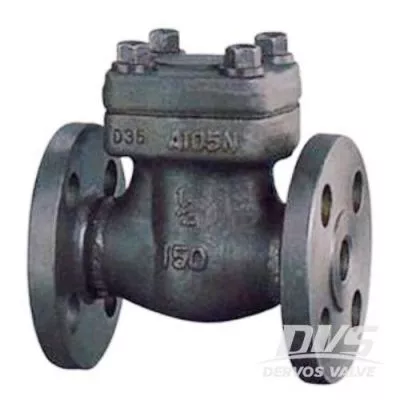Seal form and its sealing performance of forged valves-part two
What is a static seal? A static seal is usually a seal between two stationary faces. The sealing method is mainly to use a gasket.
Regular use of gasket performance:
When using a forged valve, the original gasket is often replaced as the case may be. Commonly available gaskets include: rubber flat gaskets, rubber O-rings, plastic flat gaskets, polytetrafluoroethylene packing gaskets, asbestos rubber gaskets, metal flat gaskets, metal special-shaped gasket, metal sheathed gaskets, wave gaskets, wraparound entangled gaskets and soon.
1. Rubber flat gasket: It is easy to deform, not tightened when pressed, and has poor pressure resistance and temperature resistance. It is only used for low pressure and low temperature. Natural rubber has certain acid and alkali resistance, the working temperature should not exceed 60 °C; neoprene can also resist certain acids and alkalis, with its working temperature of 80 ° C; butadiene-acrylonitrile rubber is oil resistant, and can be used at temperatures up to 80 ° C; fluororubber has excellent corrosion resistance, with good temperature resistance performance also better than common rubber and can be used in the medium of 150 °C.
2. Rubber O-shaped gasket: the cross-sectional shape is a perfect circle, there is a certain self-tightening effect, the sealing effect is better than that of the flat gasket, and the pressing force is smaller.
3. Plastic flat gaskets: The most obvious characteristic of plastics is corrosion resistance. The temperature resistance of the plastics is not good. To some extent, PTEF is the best among plastics, excellent in corrosion resistance, with wide temperature range, and can be used continuously within temperature of -180 ° C to + 200 ℃.
4. PTEF coated gasket: PTFE wrapped rubber or asbestos rubber gasket enriches and demonstrates the advantages of PTFE, at the same time making up for its poor flexibility. In this way, it is as resistant to erosion as PTFE flat gaskets, and has excellent elasticity, which enhances the sealing effect and reduces the compression force.
5. Asbestos rubber gasket: it is cut from asbestos rubber sheet. Its composition is 60-80% 25 asbestos and 10-20% rubber, and fillers, vulcanizing agents and the like. It has good heat resistance, cold resistance, chemical stability, abundant supply and low price. When used, the pressing force does not need to be very large. It can adhere to the metal, and it is best to be coated with a layer of graphite powder in order to avoid the trouble of disassembly.
6. Metal flat hot ring: lead has the ability to withstand the temperature of 100 ° C; aluminum 430 ° C; copper 315 ° C; low carbon steel 550 ° C; silver 650 ° C; nickel 810 ° C; Monel (nickel copper) alloy 810 ° C, and stainless steel 870 ° C. Among them, the pressure resistance of lead is poor, aluminum can withstand 64 kg per square centimeter, and other materials can withstand high pressure.
7. Metal special shaped gasket:
Lens gaskets: Self-tightening for high pressure valves.
Elliptical gaskets: also belongs to high pressure self-tightening gaskets.
Cone double gaskets: used for high pressure inner self-care sealing.
In addition, there are square, rhombus, triangle, tooth-shaped, dovetail-shaped, B-shaped, C-shaped, etc., generally only used in high and medium pressure valves.
8. Metal sheathed gasket: Metal has excellent temperature and pressure resistance and excellent elasticity. The sheath material is aluminum, copper, low carbon steel, stainless steel, Monel and the like. The filling materials are asbestos, PTFE, fiberglass and the like.
9. Wave gasket: It has the characteristics of small pressing force and good sealing effect. The combination of metal and non-metal combinations are often used.
10. Wraparound gasket:
The very thin metal strip and the non-metallic strip are closely attached together, and are surrounded by entangled into a multi-layered circular shape with a wave-shaped cross section, which has very excellent elastic and sealing performance. The metal strip can be constructed from 08 steel, 0Cr13, 1Cr13, 2Cr13, 1Cr18Ni9Ti, copper, aluminum, titanium, monel or the like. The non-metallic strip materials can be asbestos, polytetrafluoroethylene, and the like.
